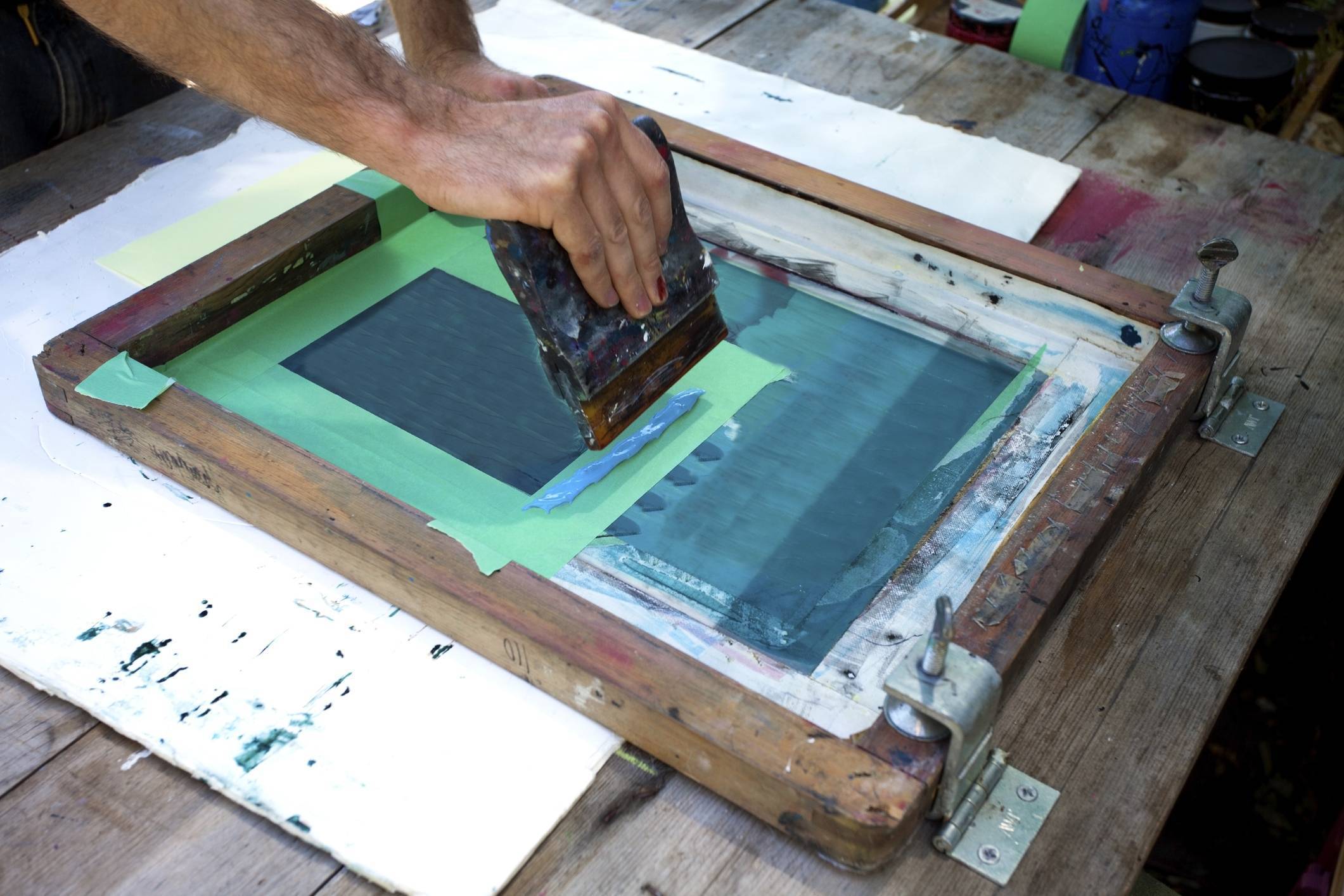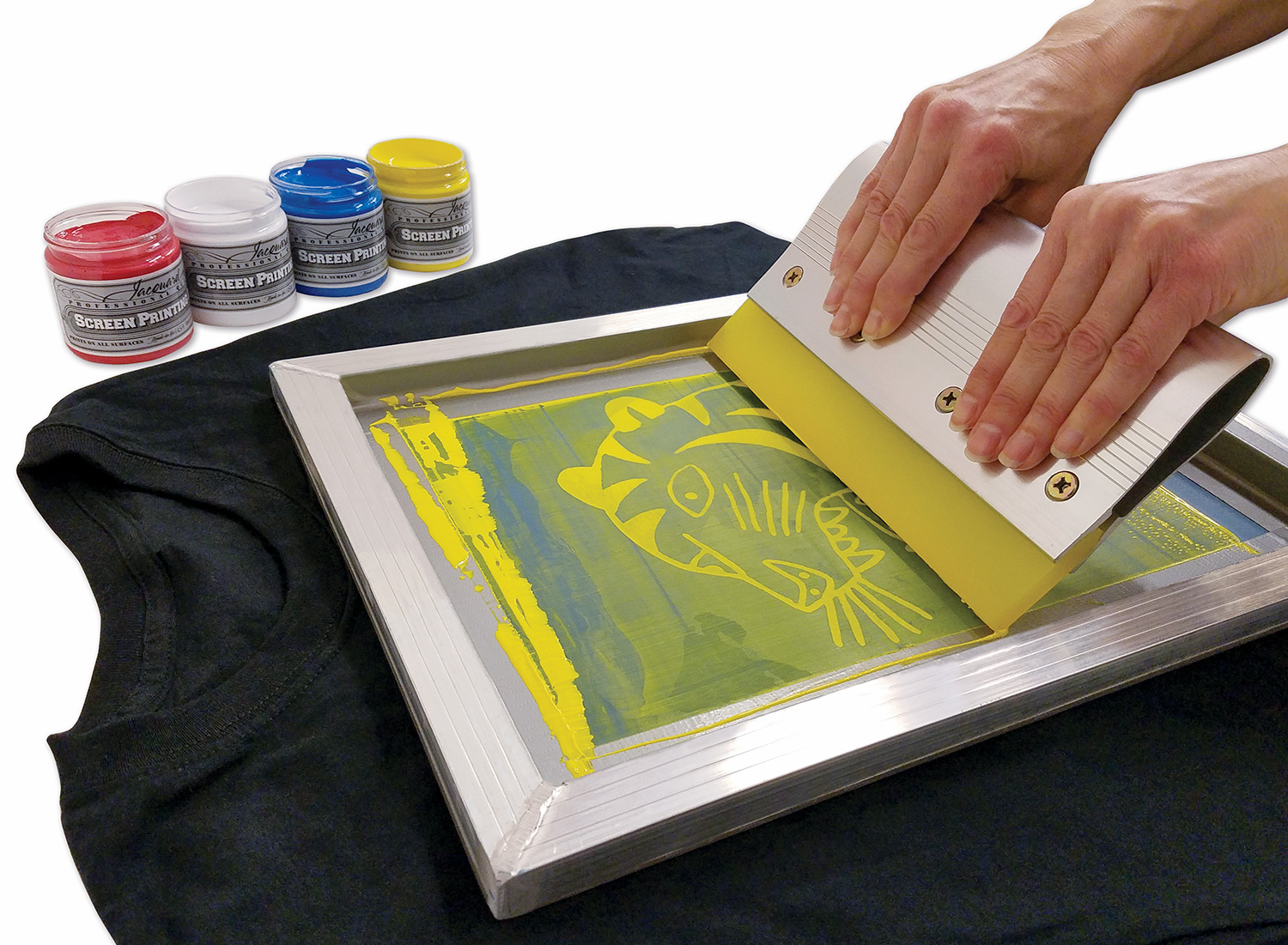Screen Printing materials and tools every starter needs
Wiki Article
From Design to Distribution: Understanding the Art of T-Shirt Screen Printing
The journey from layout to delivery in t-shirt screen printing encompasses a series of critical points that require interest to detail and tactical preparation. It begins with recognizing the nuances of your target audience, followed by the selection of suitable products and the preparation of art work that meets high criteria. Yet, as the procedure unravels, difficulties in high quality control and logistics can emerge, potentially impacting the last result. Exploring these intricacies exposes not only the intricacies of screen printing however also the crucial practices that can elevate a brand's standing in an open market.Recognizing T-Shirt Screen Printing
Comprehending T-Shirt screen printing includes acknowledging a versatile and widely used technique for moving styles onto textile. This method uses a mesh and a stencil screen to use ink onto numerous fabric materials, primarily cotton and polyester blends. The process starts with the creation of a display that includes the desired layout, which is then carefully straightened on the fabric.Ink is pressed with the screen's open locations using a squeegee, enabling accurate application of shade. This technique is preferred for its capability to create lively, durable prints that hold up well to cleaning and use. Furthermore, screen printing is qualified of fitting both basic and intricate styles, making it a favored option for custom-made clothing, advertising products, and also creative works.
Furthermore, screen printing uses scalability, making it suitable for both small set orders and massive productions. While initial setup expenses may be higher compared to various other printing methods, the efficiency and resilience of screen printing frequently warrant the investment. On the whole, understanding the basics of Tee shirts screen printing is essential for any individual wanting to take part in this preferred form of textile decoration, whether for personal tasks or industrial endeavors.
Conceiving Your Style
Conceptualizing your layout is a vital action in the Tees screen printing procedure, as it establishes the structure for the whole project (Screen Printing). This stage involves creating ideas that resonate with your target audience while making certain that the design straightens with the brand's identity and message. It is important to start by discovering motifs, color design, and graphics that show the desired aestheticLaying out preliminary concepts can be helpful, permitting for a visual depiction of concepts before wrapping up the layout. Think about using typography, images, and format in a method that captures attention and connects properly. Furthermore, it is essential to prepare for the printing method that will certainly be utilized, as this can influence layout intricacy and shade choices.
Participating in brainstorming sessions with employee or seeking responses from possible customers can additionally improve the concept procedure, supplying diverse point of views that refine the style. Eventually, a well-balanced design not only enhances the visual appeal of the T-shirt yet additionally cultivates a connection with the audience, driving interest and possible sales. Dedicating time to conceive your design can lead to a successful screen printing outcome.
Selecting the Right Products

The weight of the fabric, generally gauged in grams per square meter (GSM), affects the drape and overall feel of the Tees. Much heavier materials may supply an extra superior appearance, while lighter options fit for laid-back wear. Appearance also contributes; smoother textiles have a tendency to produce sharper prints, while distinctive surface areas can create unique aesthetic impacts.
Additionally, think about the ecological impact of materials. Organic cotton and recycled polyester are acquiring popularity among eco-conscious customers. Inevitably, choosing the best materials includes balancing aesthetic charm, performance, and sustainability, making sure that the T-shirt not only looks wonderful but also meets the expectations of your target audience.
Preparing Art Work for Printing
Preparing artwork for T-shirt screen printing calls for careful attention to detail to ensure that the final print precisely reflects the designated design. The first step is to produce a high-resolution digital documents, ideally in vector style, as this permits scalability without loss of quality. Common software application utilized for this function consists of Adobe Illustrator and CorelDRAW.Next off, validate that all text is converted to outlines or rasterized to prevent font concerns throughout printing (Abilene T-Shirt Screen Printing Company). In addition, it is vital to verify that the color setting is set to CMYK, as this lines up with the printing procedure. Pay attention to shade matching; making use of Pantone shades can assist achieve consistency across different prints
Consider the dimensions of the print location and maintain appropriate margins to stay clear of style cutoff. It's additionally wise to consist of registration marks for placement throughout the printing process. T-Shirt Printing. Finally, demand a proof from the printer to picture the last item before mass production. This action is essential for recognizing any type of prospective concerns, guaranteeing that the printed Tee shirts satisfies the preferred top quality and style specs. Correct prep work of artwork greatly influences the overall success of the screen printing project
Understanding the Printing Process
Grasping the printing process is essential for accomplishing top quality results in Tees screen printing. This phase includes numerous considerable steps that straight influence the end product. The primary step is establishing the printing machine accurately. Proper enrollment of screens warranties that colors line up appropriately, avoiding misprints and guaranteeing an expert look.
Next, choosing the best ink is very important. Different ink kinds, such as plastisol or water-based, offer different coatings and toughness. Understanding the material composition of the T-shirt also assists in selecting compatible inks.
When it involves the real printing, controlling the squeegee pressure and angle is critical. Consistent stress will certainly generate even ink circulation, while the angle impacts the circulation and insurance coverage. Furthermore, adjusting the rate of the printing press can influence the ink's healing procedure, which is basic for assuring longevity.
Quality Control and Finishing
After the printing procedure is full, carrying out effective quality assurance measures comes to be vital to validate that each Tee shirts meets the wanted standards. Quality assurance involves an organized technique to inspecting each garment for flaws, verifying that the print top quality, color precision, and textile stability straighten with the specifications set throughout the layout stage.
The initial step in quality assurance is an extensive aesthetic assessment. This involves checking for usual issues such as misalignment, ink smudges, or fading. Any type of Tee shirts that does not fulfill the quality standards must be attended to immediately, either via reprinting or repair work.
In enhancement to visual checks, it is important to carry out wash examinations on a sample of published t-shirts to analyze the longevity of the inks and the general durability of the layout. These tests help confirm that the print will certainly preserve its vibrancy and stability after numerous cleans, a vital factor for client contentment.
Completing touches, such as thread trimming and the application of treatment labels, likewise play a considerable duty in quality assurance - Screen Printing. By focusing on these elements, businesses can enhance the general presentation of their items, eventually resulting in an extra satisfying customer experience
Packaging and Distribution Solutions

To achieve suitable product packaging, take into consideration making use of eco-friendly materials that align with sustainability trends, such as recyclable poly bags or naturally degradable boxes. Each Tee shirts ought to be neatly folded up and placed in safety covering have a peek at this website to avoid creasing and possible damage throughout transportation. Including a branded insert or care instructions can better individualize the experience, cultivating consumer commitment.
Choosing a trusted shipping partner is crucial when it comes to distribution. Review options based upon tracking, expense, and speed capabilities. Using several delivery methods can satisfy various customer demands, from standard to expedited shipping.
Frequently Asked Inquiries
What Are the Typical Errors Novices Make in Screen Printing?
Usual errors newbies make in screen printing consist of inappropriate screen prep work, insufficient ink mixing, incorrect exposure times, not enough healing, and disregarding to test prints. These mistakes can result in low quality and unsatisfactory outcomes in final items.How Can I Protect Against Ink From Bleeding Throughout Printing?
To stop ink bleeding throughout printing, guarantee correct screen tension, use suitable solution density, choose the right ink consistency, preserve perfect curing temperature levels, and avoid straining the screen with excessive ink throughout application.What Kinds of Inks Are Ideal for Different Fabrics?
Picking inks based upon textile type is necessary. Water-based inks are optimal for cotton, providing gentleness. Plastisol inks fit synthetic fabrics, supplying sturdiness. Discharge inks successfully blend with natural fibers, ensuring vivid shades without endangering material honesty.Exactly how Do I Select the Right Screen Mesh Matter?
Choosing the appropriate screen mesh count relies on the wanted print information and ink type. Abilene T-Shirt Screen Printing Company. Higher mesh matters produce better information, while reduced counts facilitate thicker inks. Evaluate material kind and style complexity for ideal outcomesCan I Use Screen Printing for Tiny Set Orders?
Yes, screen printing can be properly made use of for tiny batch orders. This technique enables in-depth designs and high-grade results, making it a feasible option for customized apparel, marketing products, or minimal edition runs.Comprehending T-Shirt screen printing includes acknowledging a flexible and commonly made use of technique for moving designs onto fabric. While preliminary arrangement costs might be higher compared to various other printing techniques, the performance and sturdiness of screen printing typically justify the investment. Preparing artwork for Tees screen printing calls for cautious focus to information to assure that the last print accurately reflects the intended style. Mastering the printing process is crucial for attaining high-grade outcomes in T-shirt screen printing. Typical mistakes novices make in screen printing consist of improper screen preparation, insufficient ink mixing, inaccurate exposure times, insufficient curing, and overlooking to test prints.
Report this wiki page